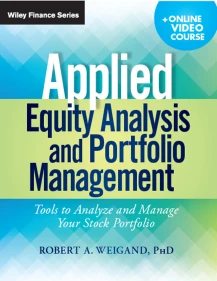Stock Return Dispersion (and the VIX) Forecast Alpha Dispersion
by Larry Gorman, Steven Sapra and Rob Weigand.
I recently teamed up with Steven Sapra from Analytic Investors and Larry Gorman from Cal Poly San Luis Obispo on a research paper that investigates the relation between stock market volatility, alpha and the information ratio. We find that measures of market volatility provide forecasts of when alpha-capture opportunities in U.S. equity markets improve or worsen. This article will present an executive summary of our findings; readers interested in the technical details can download the complete paper from SSRN.
Investors are apparently interested in the connection between volatility and the availability of alpha. For example, in his August 6 post on alpha/beta separation, Chris Holt mentions an article by Janet Rabovsky of Watson Wyatt that explores the proper balance between indexing and active management. In particular, Rabovsky’s article makes note of a connection between expected market volatility (measured via the VIX) and the effectiveness of active management:
Not surprisingly, the higher the volatility of the market, the more likely it was for active managers to perform better than the index.
Before presenting our findings, we’ll clarify a few terms. Volatility refers to the standard deviation of stock returns around their time-series mean from the previous year. Dispersion refers to the cross-sectional standard deviation of stock returns around their mean on a particular day. The VIX, of course, is the CBOE implied volatility measure, computed from the implied volatilities of various S&P 500 index options.
It makes intuitive sense that alpha-capture opportunities should improve with higher market volatility — particularly as the dispersion of stock returns around their daily, weekly, or monthly average expands. When active managers predict which stocks are likely to perform better than others, they are essentially forecasting the cross-sectional dispersion of returns. For a given level of skill, there should be a greater opportunity to add value as the return differential between high- and low-performing stocks becomes larger. This is true for both long-only and long-short strategies.
To formally test this idea, we first compute the daily alphas of every stock in the S&P 500 from 1980-2008 vs. a Fama-French 4-factor model. This means that our alphas are measured net of the risk-free rate of interest and 4 betas (market, size, value and momentum). We then document how the supply of alpha varies with the volatility measures mentioned above. Noteworthy results include:
The dispersion of returns is positively related to time-series volatility (correlation = +0.73)

and the VIX (correlation = +0.76).

Moreover, the dispersion of alpha is positively related to return dispersion:

The upshot of this finding is that the alpha spread, or opportunity to add value vs. a benchmark, is expanding and contracting in sync with return dispersion and the VIX (due to its positive correlation with dispersion).

Even better, this relation is not just contemporaneous — dispersion and the VIX provide forecasts of the dispersion of alpha over 3-month and 1-year horizons (3-month results, reported as annualized returns, are shown below). Active managers can calculate dispersion — or observe the VIX at zero cost — and obtain reliable signals of when the dispersion of alpha will expand and contract. The table below divides all the trading days from 1980-2008 into quintiles based on the daily value of cross-sectional dispersion (from low to high), and shows the median annualized alpha from the 10th, 50th and 90th percentiles over the next 3 trading months.

As dispersion increases, the performance in the 10th percentile worsens (from -52% to -76%) and the performance in the 90th percentile improves (from +53% to +86%). This means that the expected alphas from shorting stocks in the 10th percentile and going long stocks in the 90th percentile get larger as dispersion increases.
Grouping trading opportunities by quintiles of the VIX provides an even more powerful alpha signal.

Active managers can anticipate tighter alpha spreads over the next 3 months when the VIX is in its lower two quintiles (comprising 40% of the trading days from 1991-2008, a shorter time period than the dispersion results because the CBOE began publishing the VIX in 1991), and wider alpha spreads when the VIX is in its top two quintiles (comprising another 40% of the trading days over that time period).
The signals do not identify opportunities to earn higher information ratios, however. We find that active risk (tracking error) expands and contracts proportionately with market volatility. The volatility signals are therefore most likely to be useful to absolute return alpha-hunters or relative return investors simply trying to outperform a benchmark, but less useful to relative return investors who measure performance using the information ratio.
Our findings partially explain why active managers, as a group, have such a difficult time outperforming their benchmarks. The best time for skilled managers to hunt alpha is often during periods of declining equity values (because volatility is higher during bear markets) — exactly when investors desire to decrease their equity allocations and reduce their overall risk exposure.
On the other hand, active managers are not underperforming their benchmarks due to an inadequate supply of alpha. In the presence of skill, the alphas that can be earned in U.S. equity markets are large and economically significant. Our analysis shows that a manager who is skilled at going long stocks in the 75th alpha percentile and short stocks in the 25th alpha percentile could earn average gross alphas of approximately 28-30%. Skill is apparently the commodity that is in short supply.


Your humoristic style is awesome, keep doing what you’re doing!WWW.J2FASTMOTORSPORTS.com
aem http://www.j2fastmotorsports.com/aem/